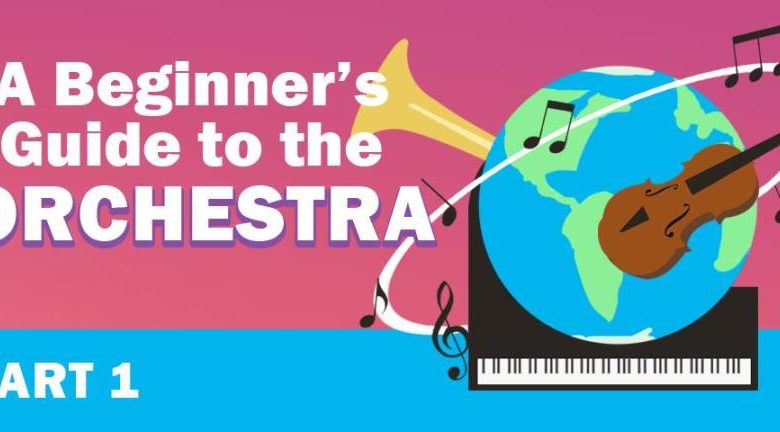A Detailed Look at Orchestras for Beginners

A Detailed Look at Orchestras for Beginners
What is an Orchestra?
An orchestra is a large musical ensemble that consists of various instrumentalists playing together under the direction of a conductor. These instrumentalists play different types of instruments, including strings, brass, woodwinds, and percussion, to create a harmonious and powerful sound.
How Does an Orchestra Work?
Orchestras work by bringing together talented musicians who specialize in different instruments. The conductor, often positioned in front of the orchestra, guides and leads the musicians by using hand gestures, cues, and a baton. The orchestra rehearses songs or compositions before performing them in front of an audience.
Instrumentation in Orchestras
Orchestras are known for their rich sound, achieved through the combination of different instrument families. Here are some of the main instrument sections you might find in an orchestra:
1. Strings: This section comprises violins, violas, cellos, and double basses, which provide the foundation of the orchestra’s sound.
2. Brass: The brass section includes trumpets, French horns, trombones, and tubas, adding power and brilliance to the performance.
3. Woodwinds: Woodwind instruments, such as flutes, clarinets, oboes, and bassoons, contribute a melodic and expressive quality to the music.
4. Percussion: Percussion instruments, like timpani, snare drums, cymbals, and xylophones, add rhythm, color, and texture to the orchestral pieces.
Frequently Asked Questions (FAQs)
Q1: How long is a typical orchestra concert?
A1: The duration of an orchestra concert can vary depending on the program. Generally, concerts run for about two hours, including an intermission.
Q2: What are some famous symphony orchestras?
A2: Some renowned symphony orchestras include the Vienna Philharmonic Orchestra, Berlin Philharmonic Orchestra, London Symphony Orchestra, and New York Philharmonic.
Q3: Can anyone join an orchestra?
A3: Joining an orchestra usually requires great skill and dedication. However, there are community orchestras or youth orchestras that may be more accessible to beginners or amateur musicians.
Benefits of Joining an Orchestra as a Beginner
Joining an orchestra as a beginner can be a rewarding experience. Here are a few benefits:
1. Skill Development: Playing in an orchestra helps beginners improve their musical skills, such as sight-reading, ensemble playing, and listening to other musicians.
2. Teamwork and Collaboration: Orchestras teach beginners the importance of teamwork and collaboration, as musicians must work together to create a cohesive and harmonious performance.
3. Musical Education: Being a part of an orchestra exposes beginners to a wide range of musical genres, styles, and composers, expanding their musical knowledge and appreciation.
4. Performance Opportunities: Orchestras provide beginners with opportunities to perform in front of live audiences, helping to build confidence and stage presence.
In conclusion, orchestras bring together a diverse group of musicians playing different instruments to create beautiful and powerful music. Joining an orchestra as a beginner can bring numerous benefits, including skill development, teamwork, musical education, and performance opportunities. Whether you aspire to become a professional musician or simply enjoy playing music, exploring the world of orchestras can be a fulfilling journey.